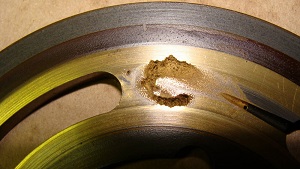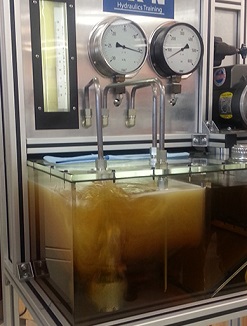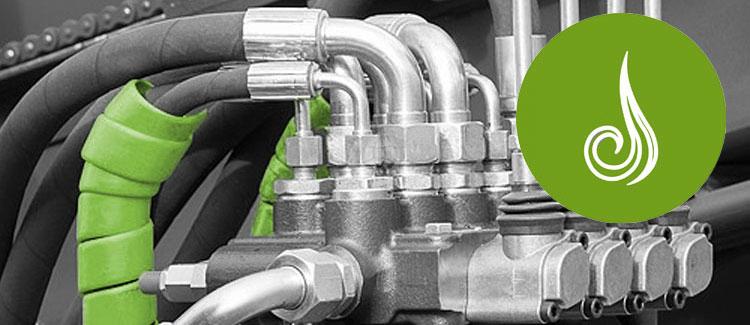Air contamination is very common in a hydraulic system.
A contaminant is defined as anything that impairs the performance of the hydraulic system and its components. Air contamination in a hydraulic system can be found in hydraulic fluid in four different forms:
- Dissolved air – hydraulic fluid typically contains 6-12% of dissolved air by volume;
- Free air – for example a pocket of air trapped anywhere within the system. Pre-filling components and proper bleeding of the hydraulic system during start-up will usually eliminate free air;
- Foam – larger bodies of air, typically bigger than 1mm in diameter, found congregating at the top of the fluid; small amounts of foam are usually cosmetic and generally do not cause problems;
- Entrained air – very small bubbles of air, less than 1mm in diameter, dispersed throughout the hydraulic fluid.
The last of these, entrained air, causes the most problems and can lead to:
- Unacceptable noise levels;
- Reduced compressibility of the hydraulic fluid creating poor, spongy component response;
- Reduced fluid viscosity, leaving surfaces vulnerable to wear;
- Increased heat-load;
- Reduced thermal conductivity;
- Severe fluid degradation, leading to component damage as a result of reduced lubricaton, overheating and burning of seals;
- Cavitation damage;
- General decreased systems efficiency.
Cavitation Damage
Cavitation is the quick formation and collapse of vapour cavities, “bubbles”, in liquids as a result of forces acting upon the liquid. It usually occurs when a liquid is subjected to rapid changes of pressure that cause the formation of cavities where the pressure is relatively low.
When subjected to higher pressure, the voids implode and can generate an intense shockwave. Cavitation causes extreme wear in engineering contexts – to propeller blades and hydraulic equipment – and even in nature, to fish fins as they swim through the water. Fins may heal, hydraulic equipment and machinery don’t!


Cavitation cannot always be seen, but a demonstration here at Eaton’s training centre in Ohio, shows an extreme example of the effects of excessive air in hydraulic fluid.
As well as the presence of foam, other symptoms of air contamination are:
Excessive or abnormal noise – often caused by aeration or cavitation in the hydraulic system. Aeration is caused when air is introduced to hydraulic fluid and noise is created when those fluids are compressed. Cavitation occurs when the hydraulic fluid levels run low and air makes its way into the system instead.
High pressure – often caused when hoses and pipework have too small a diameter to transfer fluids in high quantities, meaning that air blockages inevitably occur. Draining the system and fitting larger hoses can rectify the problem.
As mentioned above, hydraulic fluid contains up to 12% dissolved air by volume. This dissolved air can come out of the hydraulic fluid under certain conditions resulting in entrained air; this process is known as gaseous cavitation.
Static pressure decrease
When fluid temperature increases or static pressure decreases, the air solubility is reduced and bubbles can form within the fluid. A decrease in static pressure and subsequent release of dissolved air can occur at the pump inlet, because of:
- Clogged suction strainers or inlet filters;
- Undersized or clogged reservoir breather;
- Restricted intake line;
- Turbulence caused by intake line isolation valves;
- Poorly designed inlet;
- Excessive vertical distance between the pump intake and minimum fluid level.
Other causes of decreased static pressure can also be caused by changes in fluid velocity through the system, flow transients and incorrectly adjusted or faulty anti-cavitation or load control valves.
Entrained air can also be caused by external ingestion. Like gaseous cavitation, this often occurs at the pump as a result of: loose intake-line clamps or fittings, porous intake lines, low reservoir fluid level or a faulty shaft seal on the pump. It can also occur due to faulty or incorrectly adjusted load control valves, leading to air being drawn past the gland of double-acting cylinders, and return fluid plunging into the reservoir (drop-pipes extending below minimum fluid level should be fitted to all return penetrations).
As always, prevention is better than cure and proactive hydraulic systems and equipment maintenance will prevent the occurrence of most air contamination problems.






